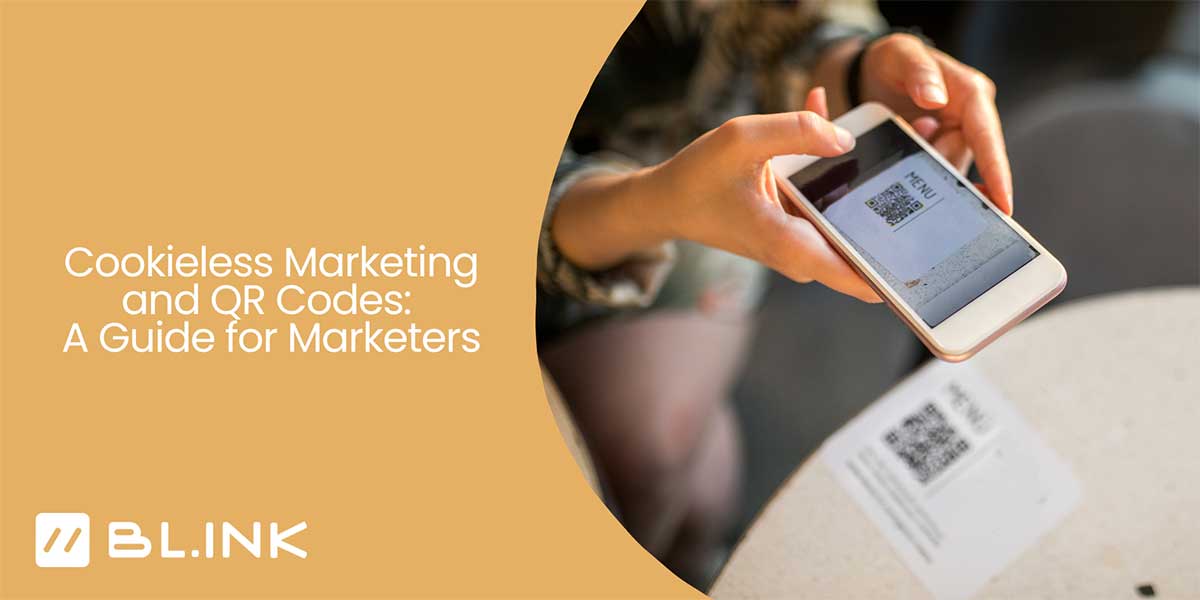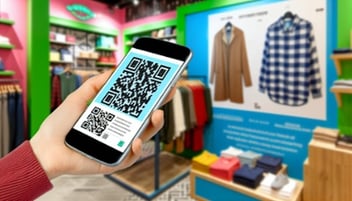
Listen to this blog
Cookieless Marketing and QR Codes: A Guide for Marketers
Cookieless marketing is a term used to describe the use of technology, such as QR codes, to deliver content to customers without the use of cookies. Cookies are small pieces of data that are stored on a user's computer or mobile device when they visit a website. They are used to track users' online activities and preferences, and often contain information about the user's browsing history.
While cookies provide an important service for many online businesses, they can also be seen as an invasion of privacy. For this reason, many people choose to disable cookies or delete them from their devices altogether.
This has led to the development of cookieless marketing technologies, which allow marketers to engage with customers without using cookies. QR codes are one example of cookieless marketing technology. They allow marketers to create digital 'business cards' that can be scanned by customers using a QR code scanner app on their smartphone or tablet. By scanning the QR code, customers can be taken directly to the content or offer that the marketer has created.
Cookieless marketing is still in its early stages, but it offers great potential for businesses looking to reach out to customers without compromising their privacy. In this guide, we will explore how cookieless marketing works and show you how you can start using it in your marketing strategies.
How QR codes be used in a cookieless marketing world?
QR codes are proving to be a valuable marketing tool when it comes to effective digital tracking. QR codes, unlike cookies, allow companies to track responses and engagements using unique identifiers allocated to their customers, which can provide valuable insights into the users' behavior and preferences.
QR code tracking allows marketers to target their audience more accurately and meet their customers' needs more effectively by offering them timely and relevant content. Additionally, QR codes also allow businesses to quickly get an idea of how effective their campaign is by measuring the number of scans and conversions. This data can help marketers adjust their campaigns accordingly and ensure they are engaging with their customers in the most efficient way possible.
How do cookieless marketing and QR codes work together to reach consumers without cookies tracking them online?
Privacy is an increasingly important concern for digital marketers and customers alike. Customers want to make sure they are in control of their data, and marketers have long relied on that data for creating personalized and effective campaigns.
That's where cookieless marketing and QR codes come into play: Without relying on cookies to track users online, you can use these technologies to reach and engage with customers while honoring their privacy. Cookieless solutions like QR codes allow you to identify users without taking away their privacy—so that your audience feels more secure about their overall experience. They open up a variety of new opportunities for targeted messaging and a streamlined user experience, while still maintaining privacy expectations. It's a great way to reach consumers while also respecting their privacy preferences.
With BL.INK, you can generate QR codes to utilize in your campaigns, and still track performance without using cookies. By tracking the performance of your QR codes, you can gain insights into how customers are engaging with your content and offers without compromising their privacy. This way, you can reach your target audience and still maintain insights into your campaign performance.
Why is cookieless marketing important for marketers to understand and use in today's digital landscape?
Cookieless marketing is taking the digital space by storm and there are many advantages for marketers using this approach. With an increasing number of consumers concerned about their privacy, cookieless marketing effectively eliminates any personal data tracking that was associated with cookie-driven tactics. This allows marketers to reach potential customers without being intrusive by pulling data from third-party sources such as social media profiles or search history.
Additionally, cookieless marketing also provides more accurate insights into customer behavior because it avoids false positives which can occur when relying on cookies alone. As changes in technology and regulation continue to shape our market landscape, it’s no wonder why cookieless marketing has become one of the leading trends among modern digital marketers.
How can marketers use cookieless marketing and QR codes to reach their target audiences more effectively?
As customer engagement and digital attribution become increasingly important for marketers, techniques such as cookieless marketing via QR codes may help to more effectively reach target audiences. With cookieless marketing, marketers are still able to identify customer trends, empowering brands to bolster customer relationships by analyzing customer behavior.
Meanwhile, QR codes are efficient ways to easily store customer information that can be accessed from physical locations at the point of sale or within their analytics tracking tools, like BL.INK or Google Analytics. These methods allow marketers to get a better understanding of customer habits to deliver tailored messages with precision. By leveraging cookieless marketing and QR codes, marketers may have an easier time connecting with their target audiences and successfully reaching their goals.
BLINK's analytics give you insight into the scans -- where your audience is located, what time of day they're engaging with your content, and overall engagement metrics. By connecting BL.INK with your analytics platform, you can gain even deeper insights post-QR-scan.
Using QR codes in your marketing campaigns
QR codes are a powerful way for businesses to reach customers, generate leads, track results, and ultimately increase conversions. QR codes can direct customers directly to a product page or give them exclusive discounts when scanned. You can also use QR codes to get customer feedback by linking them directly to a survey that's easily accessible and allows for quick feedback. Tracking QR codes in BL.INK will also tell you the exact number of scans for each QR Code campaign, which will help you adjust your strategy accordingly. QR codes can be used in any type of marketing - print, TV or film, radio, and digital - all of which will help increase engagement and drive more business success.
BL.INK makes QR code generation a breeze. Marketers can generate and download QR codes with just a few clicks. Enterprise users can also customize their QR codes to meet their branding guidelines. This makes for a better customer experience, as your audience will trust the QR code and know what to expect from the content on the other side, leading to a higher scan-through rate.
In conclusion, using QR codes in cookieless marketing and QR codes are an effective way to reach customers without cookies tracking them. By using cookieless marketing, marketers can target their desired audiences in a more precise manner and help increase their ROI. Moreover, when it comes to campaigns or promotions, the use of QR codes helps brands build trust, drive engagement and grow conversion rates. All in all, for marketers looking to establish themselves as reliable brands that are up-to-date with current digital trends, implementing cookieless marketing strategies and utilizing QR codes is essential for success in the modern world.
Want to learn more? Let's link up.



